Welcome to the complete care manual for the Chinese Privet Bonsai, also known as Ligustrum sinense. Whether you’re a seasoned bonsai enthusiast or just starting out, this guide will provide you with all the essential information you need to care for your Chinese Privet Bonsai. From its appearance to light requirements, watering to fertilizing, potting to propagation, and dealing with pests and diseases, we’ve got you covered. Let’s dive in and ensure your Chinese Privet Bonsai thrives!
Key Takeaways:
- Chinese Privet Bonsai, also known as Ligustrum sinense, is a popular choice among bonsai enthusiasts.
- Its appearance includes ovate leaves, small white scented flowers, and small black fruits.
- The Chinese Privet Bonsai requires bright light, both indoors and outdoors, but protection from hard frost during winter.
- Thorough and regular watering, along with proper fertilizing, is crucial for the health of the Chinese Privet Bonsai.
Appearance of Chinese Privet Bonsai
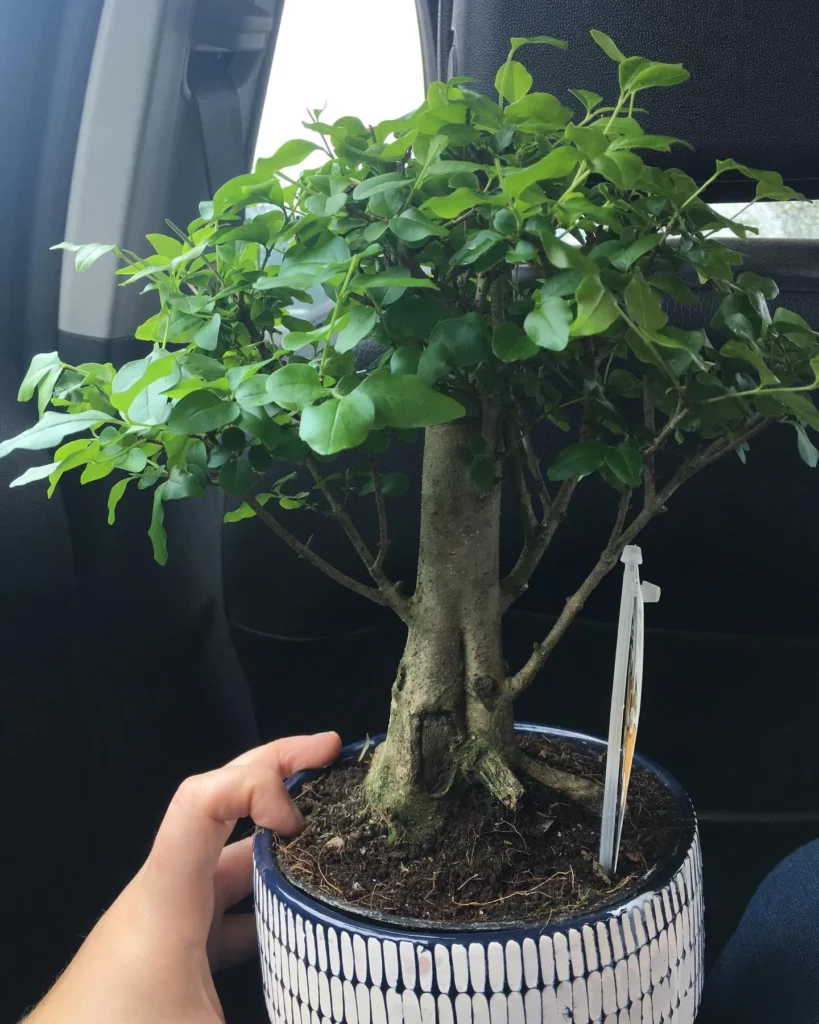
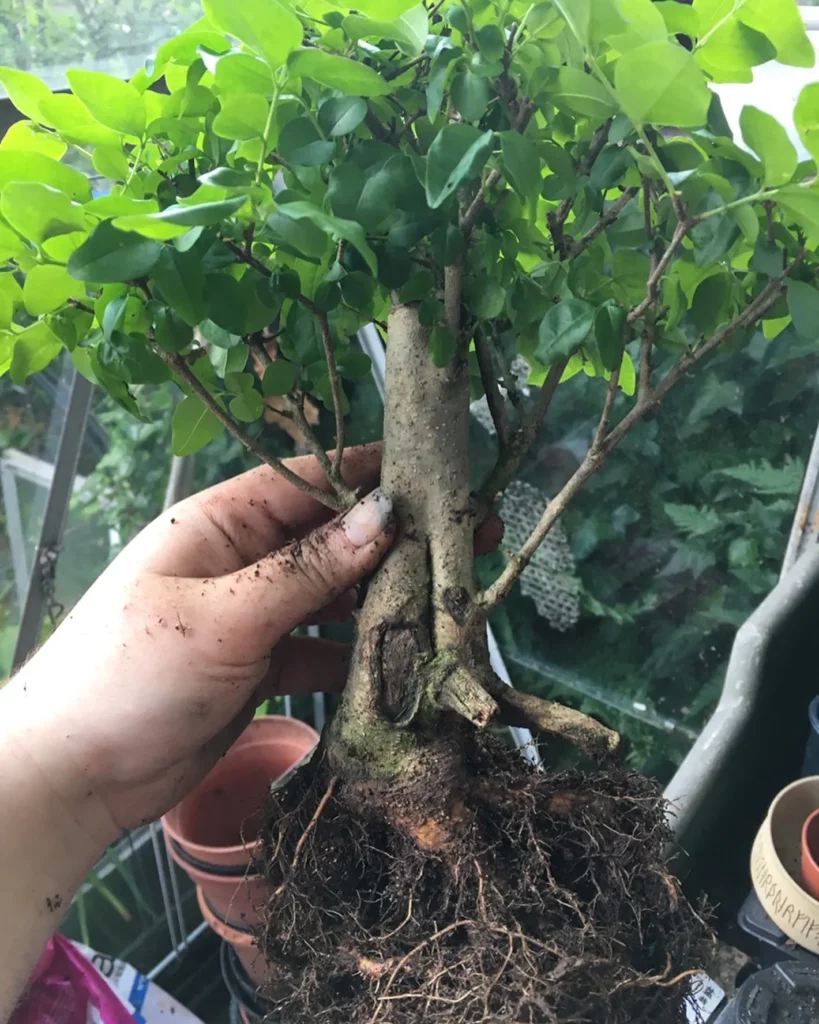
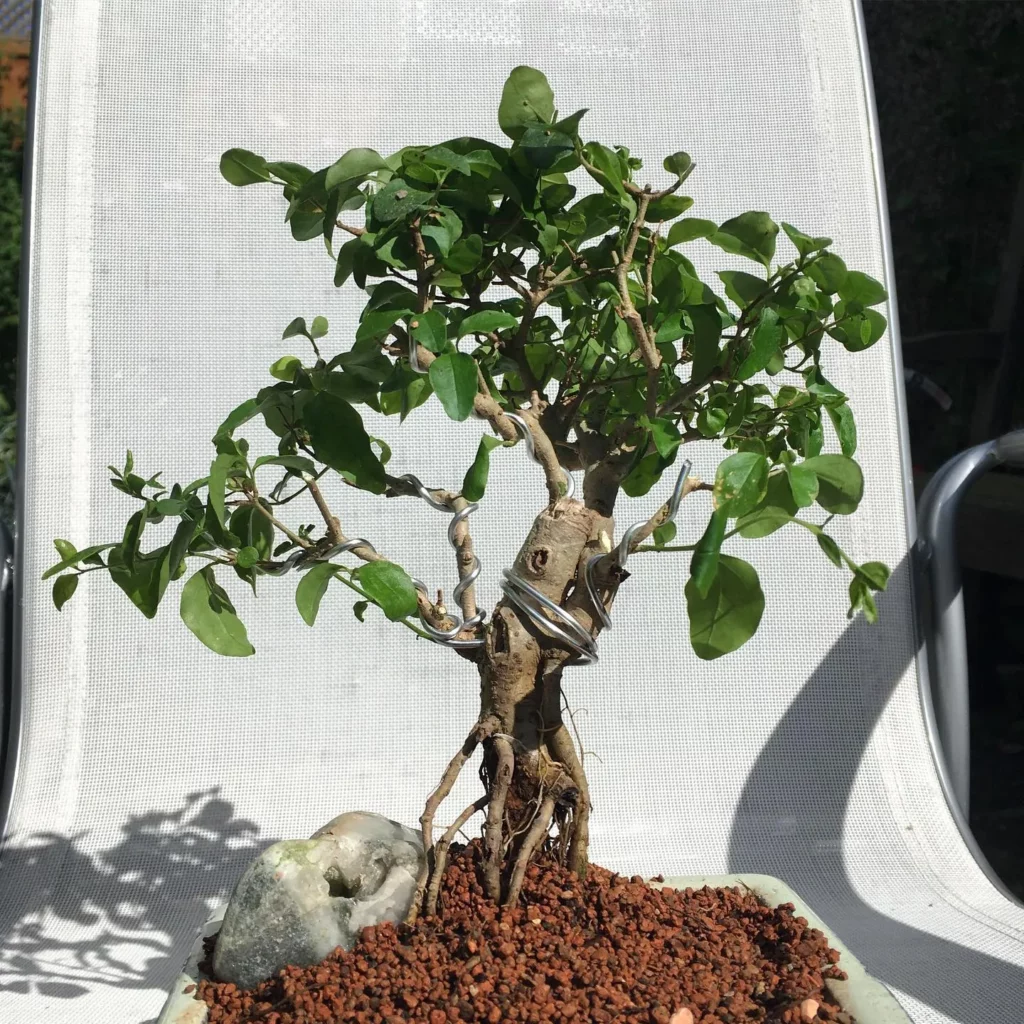
The Chinese Privet Bonsai, also known as Ligustrum sinense, is a small tree or shrub with ovate leaves that are arranged opposite to each other. Its leaves have a moderate level of toxicity. During the summer months, this bonsai tree produces small, white scented flowers that are followed by small black fruits. One of the standout characteristics of the Chinese Privet Bonsai is its thick trunk, which adds to its appeal as a bonsai material.
If you’re looking for a bonsai tree with unique foliage and an interesting overall appearance, the Chinese Privet Bonsai is a great choice. Its attractive leaves, scented flowers, and striking trunk make it a captivating addition to any bonsai collection.
Key Characteristics of Chinese Privet Bonsai:
- Small tree or shrub
- Ovate leaves arranged opposite to each other
- Moderately poisonous leaves
- Produces small white scented flowers in summer
- Small black fruits
- Thick trunk
Light Requirements for Chinese Privet Bonsai

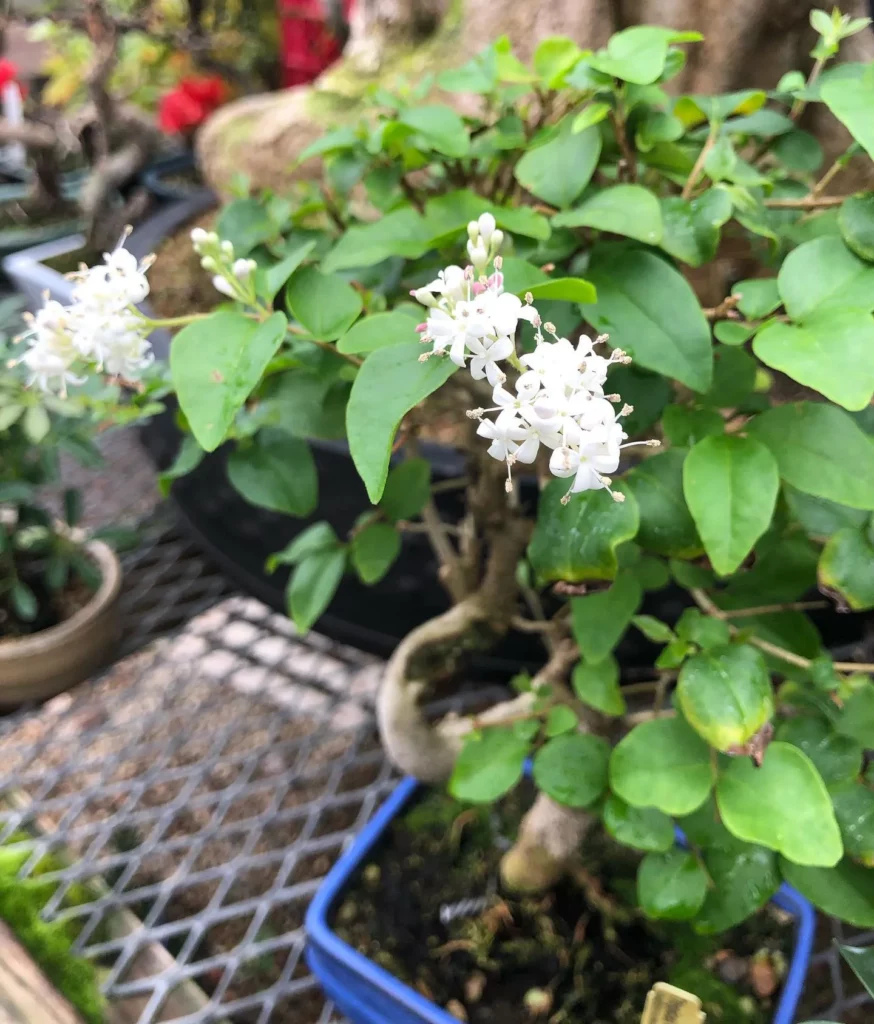
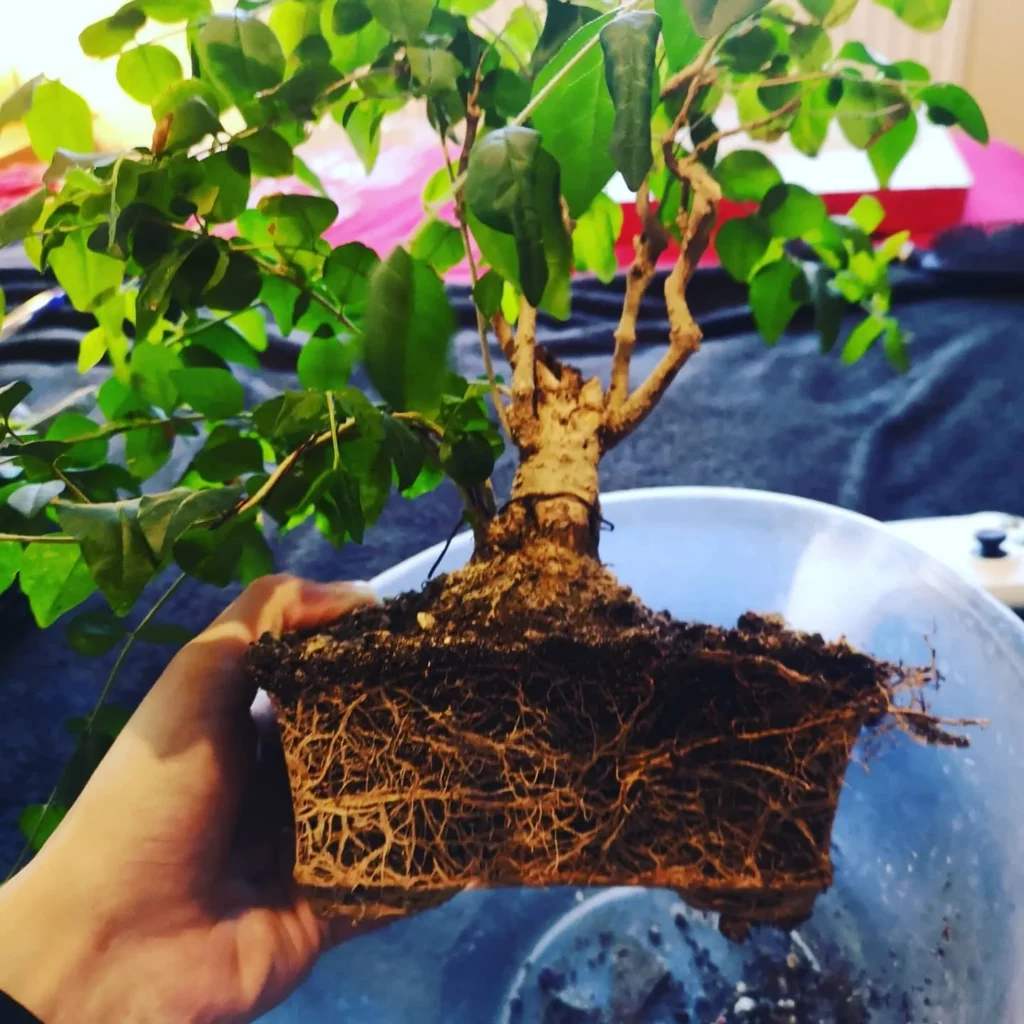
The Chinese Privet Bonsai, also known as Ligustrum sinense, thrives in a bright position with direct sunlight for at least part of the day. Whether you choose to keep your bonsai indoors or outdoors, providing the right amount of light is crucial for its healthy growth.
If you decide to keep your Chinese Privet Bonsai indoors, make sure it has access to bright, indirect light. Placing it near a south-facing window or using grow lights can help simulate natural sunlight. While it can tolerate some shade, ensuring it receives enough light is essential.
For outdoor Chinese Privet Bonsai, it is recommended to position them in areas where they can receive full sun. This means finding a spot where they can get direct sunlight for at least 6 hours a day. However, it’s important to protect them from hard frost during the winter months.
Here are some tips to ensure proper lighting for your Chinese Privet Bonsai:
- Place your bonsai near a south-facing window if kept indoors.
- If growing outdoors, choose a location with at least 6 hours of direct sunlight.
- Consider using grow lights for indoor bonsai to supplement natural light.
- Protect your outdoor bonsai from hard frost during winter.
Watering Chinese Privet Bonsai
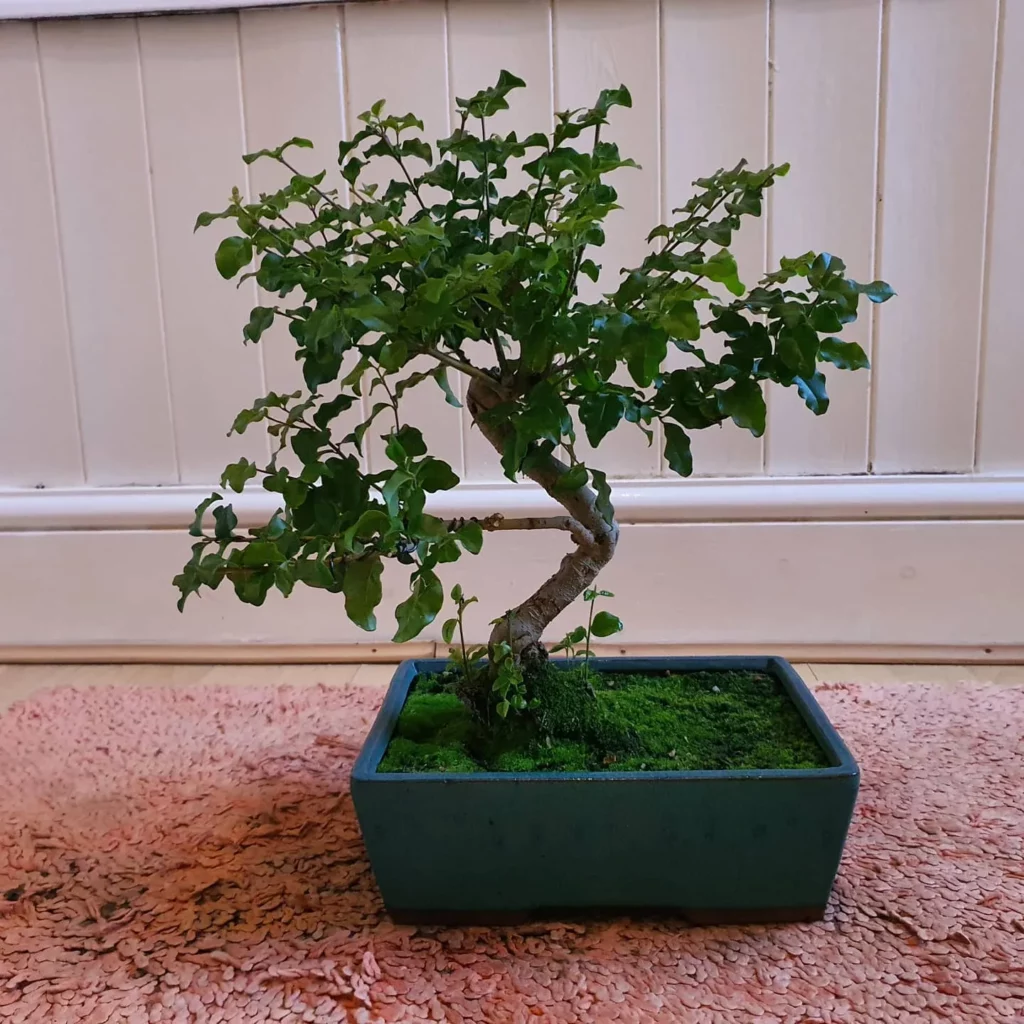
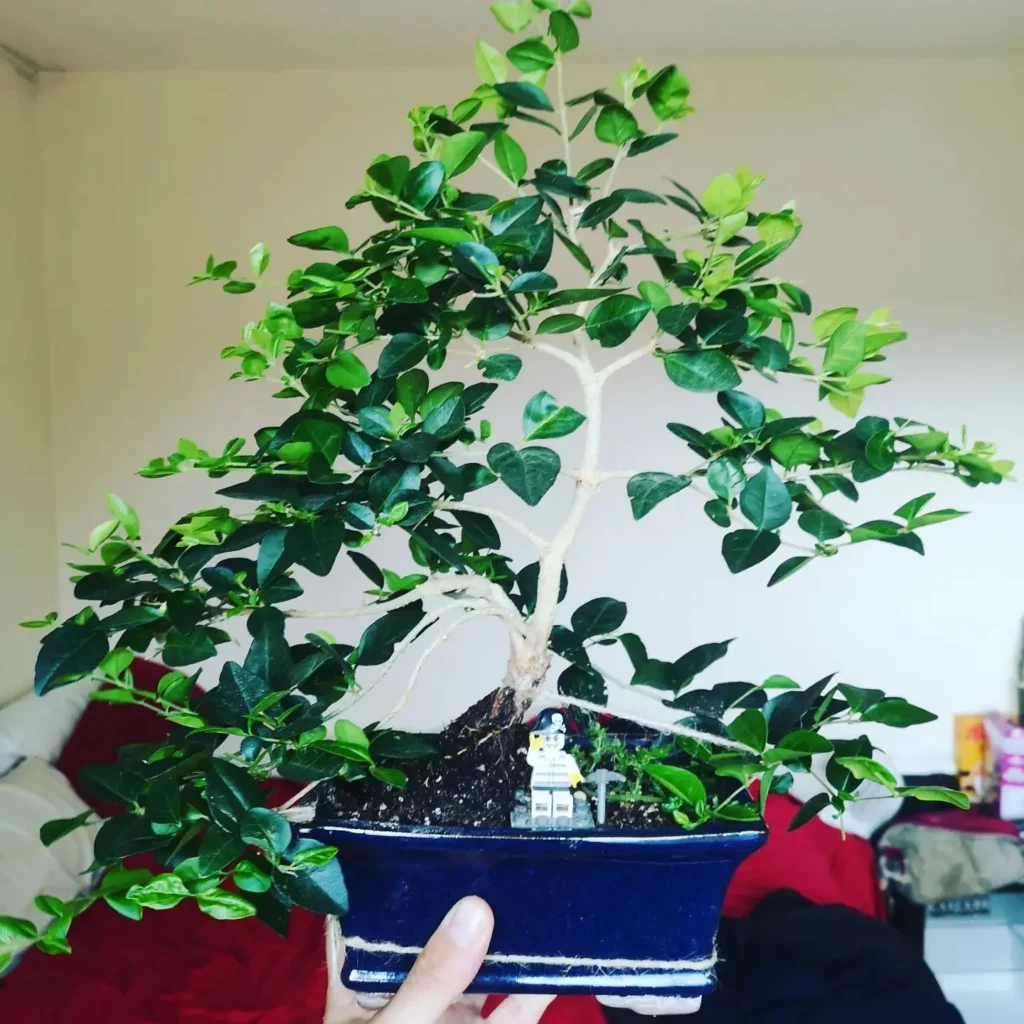
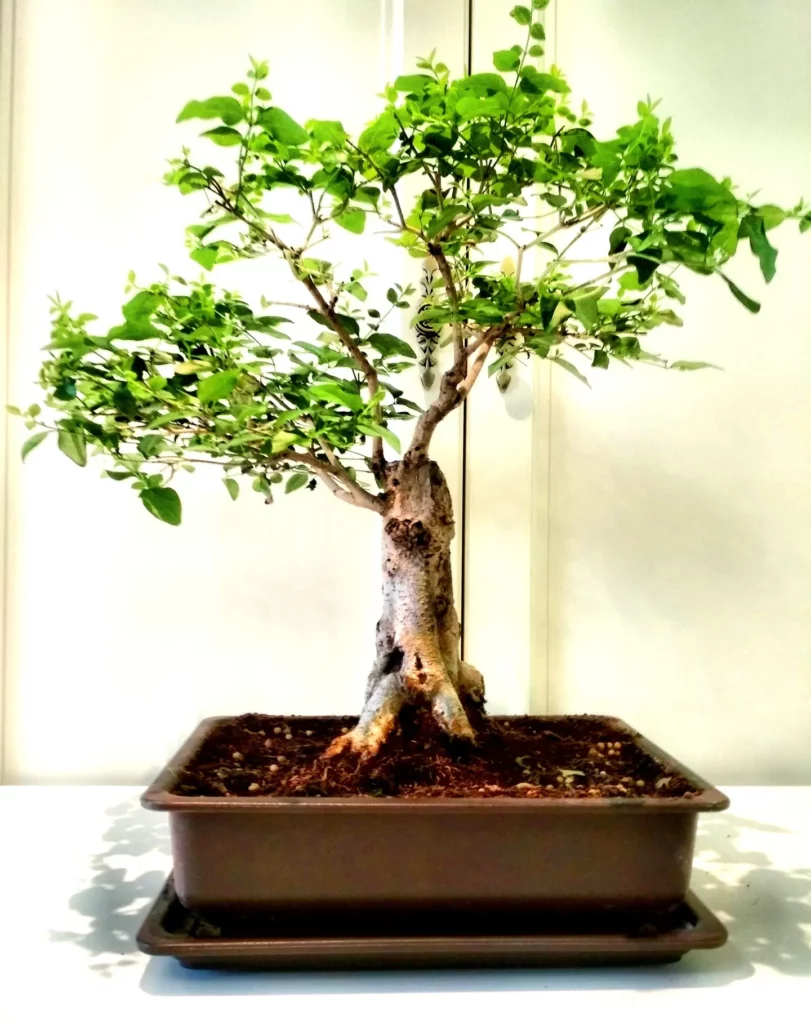
Proper watering is essential for the health and vitality of your Chinese Privet Bonsai. Follow these guidelines to ensure your bonsai receives the right amount of water:
- Regular and thorough watering: Chinese Privet Bonsai requires regular watering, especially on hot days. Make sure to water the bonsai thoroughly, allowing the soil to soak up the moisture.
- Avoid overwatering: While it’s important to keep the soil moist, overwatering can lead to root rot and other issues. Allow the soil to dry out slightly between watering, but be careful not to let it completely dry out.
- Use the right water: Chinese Privet Bonsai prefers slightly acidic water. Avoid using calcareous water, as it can result in deficiency symptoms like chlorosis. If possible, collect rainwater or use filtered water for watering.
Signs of improper watering
Pay attention to the following signs, as they may indicate that your Chinese Privet Bonsai is not receiving the right amount of water:
- Wilting leaves: If the leaves are drooping and wilting, it may be a sign of underwatering.
- Yellowing leaves: Overwatering can cause the leaves to turn yellow. Check the moisture levels of the soil and adjust your watering accordingly.
- Mold or fungus growth: Too much moisture can lead to the growth of mold or fungi on the soil surface. If you notice any signs of mold or fungus, reduce your watering frequency.
Fertilizing Chinese Privet Bonsai
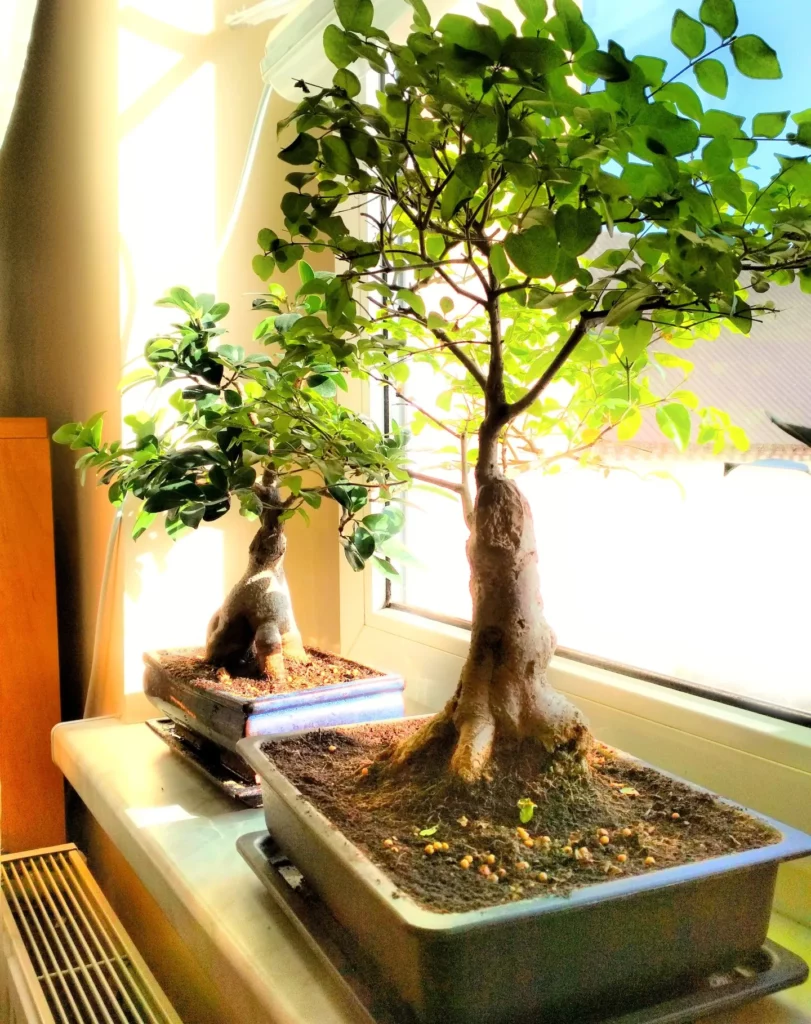
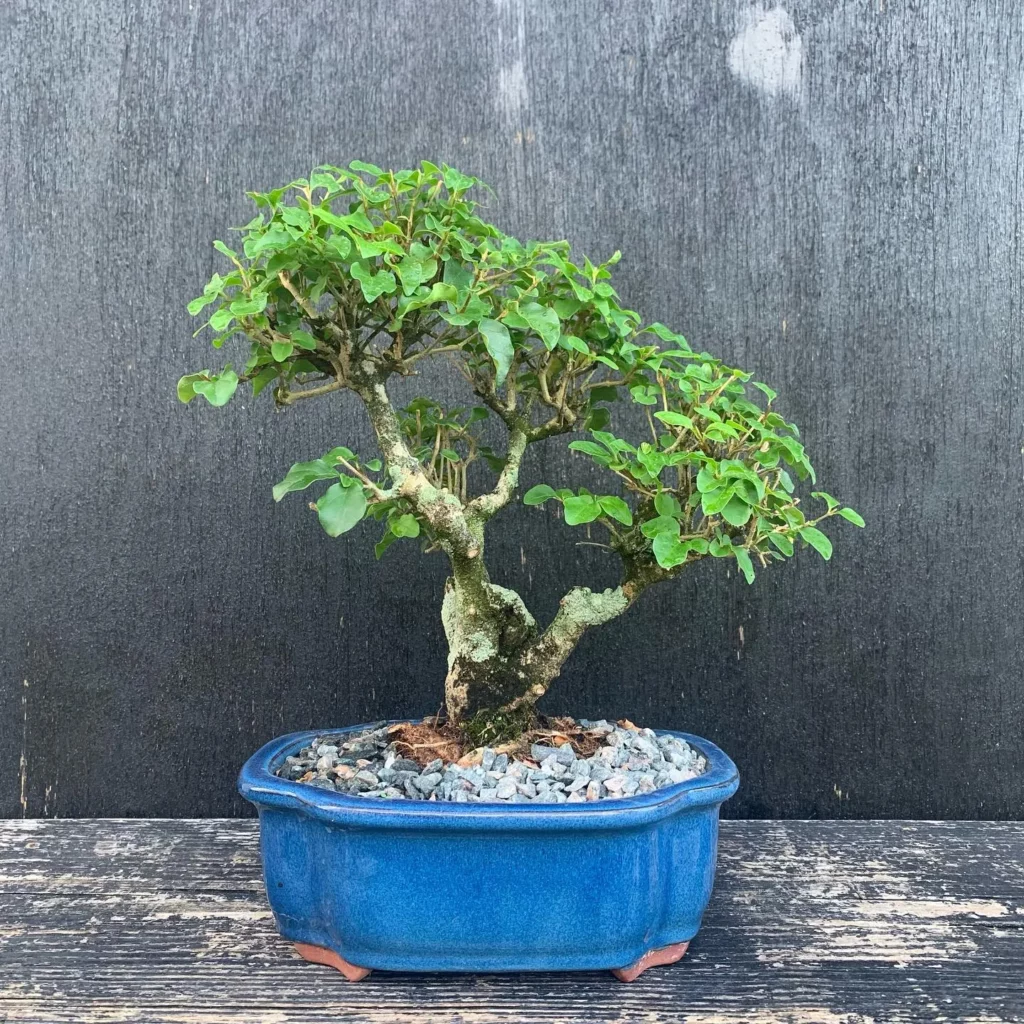
Proper fertilizing is essential for the health and growth of your Chinese Privet Bonsai. By providing the right nutrients, you can ensure that your bonsai tree thrives and remains vibrant. Here are some important tips to keep in mind when fertilizing your Chinese Privet Bonsai:
- Choose a balanced fertilizer: When selecting a fertilizer for your Chinese Privet Bonsai, opt for a balanced formula that contains equal ratios of nitrogen (N), phosphorus (P), and potassium (K). This will provide your bonsai with the necessary nutrients for healthy growth.
- Apply fertilizers during the growing season: Fertilize your Chinese Privet Bonsai during its active growth period, typically from spring to early fall. This is when the bonsai requires the most nutrients to support its growth and development.
- Follow the recommended dosage: Carefully follow the instructions on the fertilizer package to determine the appropriate dosage for your Chinese Privet Bonsai. Over-fertilizing can lead to nutrient burn and damage the roots of your bonsai tree.
- Apply fertilizer evenly: Spread the fertilizer evenly across the soil surface of your Chinese Privet Bonsai. Avoid placing the fertilizer directly on the trunk or foliage, as this may cause burns or damage to the plant.
- Water after fertilizing: After applying the fertilizer, water your Chinese Privet Bonsai thoroughly. This helps to distribute the nutrients evenly and prevents the risk of fertilizer burn.
Fertilizing Frequency
The frequency of fertilizing your Chinese Privet Bonsai will depend on various factors such as the type of fertilizer used, the growth rate of your bonsai, and the environmental conditions. As a general guideline, it is recommended to fertilize your Chinese Privet Bonsai every four weeks during the growing season.
However, it is important to closely monitor the health and appearance of your bonsai tree and adjust the fertilizing frequency accordingly. If the growth appears slow or the leaves show signs of nutrient deficiencies, you may need to increase the frequency of fertilizing. On the other hand, if the bonsai is growing vigorously and producing excessive foliage, you may need to reduce the frequency of fertilizing.
Chinese Privet Bonsai Potting: Ensuring Healthy Growth and Development
Proper potting techniques are essential for maintaining the health and vigor of your Chinese Privet Bonsai (Ligustrum sinense). Repotting your bonsai every two or three years promotes root health and growth. When repotting, it’s important to prune the roots to encourage fine feeder roots to develop. This helps to improve nutrient absorption and overall health.
Choose a suitable bonsai pot that provides enough room for the roots to grow, but not too much space that it hinders root development. A glazed ceramic pot is a popular choice as it retains moisture better than plastic pots. Additionally, the color and design of the pot can enhance the aesthetic appeal of your bonsai.
To repot your Chinese Privet Bonsai, gently remove it from its current pot, being careful not to damage the roots. Remove any old soil or debris from the roots by gently teasing them apart. Trim back any excessively long or tangled roots. Place a layer of fresh bonsai soil in the new pot, spreading the roots over the soil. Fill the remaining space with more bonsai soil, ensuring that the roots are covered but not buried too deeply.
Key Points:
- Repot your Chinese Privet Bonsai every two or three years to promote root health and growth.
- Choose a suitable bonsai pot that provides enough room for the roots to grow.
- Gently remove the bonsai from its current pot and prune the roots to encourage fine feeder roots.
- Place a layer of fresh bonsai soil in the new pot and spread the roots over the soil.
- Fill the remaining space with more bonsai soil, ensuring the roots are covered but not buried too deeply.
Once you have repotted your Chinese Privet Bonsai, water it thoroughly to ensure the soil is evenly moistened. Place your bonsai in a shaded area for a few weeks to allow the roots to establish themselves in the new soil. Regularly monitor the moisture level of the soil and adjust your watering routine accordingly.
Propagation of Chinese Privet Bonsai
If you’re looking to expand your collection of Chinese Privet Bonsai trees, you’ll be pleased to know that propagation is a relatively straightforward process. There are two common methods you can use: cuttings and air-layering.
1. Propagation through Cuttings
Taking cuttings is one of the easiest and most popular ways to propagate Chinese Privet Bonsai. Here’s how:
- Choose a healthy branch from the parent tree. It’s best to select a semi-hardwood cutting.
- Trim the cutting to a length of about 6 inches, making sure to remove any leaves from the lower part.
- Apply rooting hormone to the cut end of the branch to promote root growth.
- Place the cutting in a well-draining soil mix and water lightly.
- Keep the cutting in a warm, humid environment with indirect sunlight.
- In a few weeks, you should start to see roots forming. Once the roots are well-established, you can transplant the cutting into its own pot.
2. Air-layering
Air-layering is another effective method for propagating Chinese Privet Bonsai. Here’s how it’s done:
- Select a healthy branch that is about 1-2 years old and has a diameter of at least 1/2 inch.
- Make a small incision in the bark of the branch, about 1 inch above where you want the new root system to form.
- Apply rooting hormone to the incision to stimulate root development.
- Wrap the incision with moist sphagnum moss and cover it with plastic wrap to create a humid environment.
- Secure the plastic wrap in place with a twist tie or string.
- Check the moss regularly to ensure it stays moist. In a few months, you should see roots growing from the incision.
- Once the roots are well-established, you can carefully cut the branch below the new root system and transplant it into a pot.
Growth and Development of Chinese Privet Bonsai
The Chinese Privet Bonsai is a resilient plant that thrives when given proper care and attention. As it grows, you’ll have the opportunity to shape and style the bonsai through various techniques. Here are some key factors to consider for the growth and development of your Chinese Privet Bonsai:
Trimming and Pruning:
Regular trimming and pruning are essential for maintaining the desired shape and size of your Chinese Privet Bonsai. It’s best to avoid trimming shoots until summer if you want the tree to produce flowers. When pruning, take care not to damage the soft bark of the twigs and branches.
Wiring:
Wiring can be used to shape the branches and create the desired bonsai form. However, be cautious when applying wire, as the branches of the Chinese Privet Bonsai may be prone to breakage. Use flexible wire and apply it gently to avoid causing harm.
Regular Maintenance:
Consistent care is crucial for the health and development of your Chinese Privet Bonsai. This includes providing adequate sunlight, watering, and fertilizing as per the care manual. Regularly inspect your bonsai for any signs of pests or diseases and address them promptly.
Dealing with Pests and Diseases of Chinese Privet Bonsai
The Chinese Privet Bonsai, like any other plant, can be prone to pests and diseases. However, with proper care and regular maintenance, you can keep your bonsai healthy and free from these issues. Here are some common pests and diseases that may affect your Chinese Privet Bonsai and how to deal with them:
Pests:
- Aphids: These small insects can suck the sap from the leaves and stems of your bonsai, causing leaf distortion and yellowing. To control aphids, you can use insecticidal soap or neem oil.
- Scale Insects: These pests can attach themselves to the leaves and branches of your bonsai, sucking out sap and causing plant weakness. You can use insecticidal sprays or wipe the scales off with a cotton swab dipped in rubbing alcohol.
- Whiteflies: These tiny insects can cause yellowing of the leaves and the presence of sticky honeydew on the plant. To control whiteflies, you can use yellow sticky traps or insecticidal sprays.
- Weevils: These beetles can cause damage to the leaves and stems of your bonsai by chewing on them. You can manually remove the weevils or use insecticidal sprays to control them.
Diseases:
- Wilt: If you notice your bonsai’s leaves becoming droopy and wilting, it may be a sign of root rot or fungal infection. To prevent wilt, make sure your bonsai is not overwatered and provide good drainage. If wilt occurs, you may need to use a fungicide specifically formulated for bonsai trees.
- Mildew: Powdery mildew can appear as a white powdery substance on the leaves and stems of your bonsai. To control mildew, you can use a fungicide or a mixture of baking soda and water sprayed on the affected areas.
Chinese Privet Bonsai – A Beginners’ Choice
If you’re new to the world of bonsai gardening, the Chinese Privet Bonsai, also known as Ligustrum sinense, is an excellent choice to start with. Its beginner-friendly nature and unique appearance make it a popular option among bonsai enthusiasts.
One of the reasons why the Chinese Privet Bonsai is recommended for beginners is its ability to withstand bonsai styling techniques. You can trim, prune, and even defoliate this tree without worrying too much about damaging it. This allows beginners to practice their skills and experiment with different styling techniques to create their desired bonsai tree.
Another advantage of the Chinese Privet Bonsai for beginners is its less demanding soil requirements. This tree can tolerate a wide range of soil conditions, making it easier for beginners to find the right soil mix without worrying too much about getting it perfect from the start.
Key Points:
- The Chinese Privet Bonsai is a beginner-friendly choice for bonsai gardening.
- It can withstand bonsai styling techniques, allowing beginners to practice their skills.
- The Chinese Privet Bonsai is less demanding in terms of soil requirements.
Conclusion
The Chinese Privet Bonsai, with its unique appearance and ease of care, is a popular choice among bonsai enthusiasts. By following the care guidelines provided in this comprehensive guide, you can ensure that your Chinese Privet Bonsai thrives all year round. From providing the right amount of light and water to proper fertilizing and addressing pests and diseases, each aspect of care contributes to the overall health and beauty of your Chinese Privet Bonsai.
Proper care is essential for the Chinese Privet Bonsai’s growth and development. With its thick trunk and small leaves, this bonsai tree is a great choice for beginners. Its ability to withstand bonsai styling techniques makes it even more desirable. Whether you choose to keep your Chinese Privet Bonsai indoors or outdoors, it will bring a touch of natural beauty to any setting.
Enjoy the art of bonsai gardening with the Chinese Privet Bonsai. With patience and dedication, you can witness the transformation of this small tree into a stunning masterpiece. Remember to regularly inspect your bonsai for any signs of pests or diseases and address them promptly. With the right care, your Chinese Privet Bonsai will continue to thrive and bring joy for years to come.
FAQ
What is the Chinese Privet Bonsai’s scientific name?
The scientific name of the Chinese Privet Bonsai is Ligustrum sinense.
What is the appearance of the Chinese Privet Bonsai?
The Chinese Privet Bonsai is a small tree or shrub with ovate leaves that are opposite in arrangement. It has a thick trunk and produces small white scented flowers in summer, followed by small black fruits.
What are the light requirements for the Chinese Privet Bonsai?
The Chinese Privet Bonsai thrives in a bright position with direct sunlight for at least part of the day. It can also be kept indoors but requires protection from hard frost during the winter.
How often should I water the Chinese Privet Bonsai?
The Chinese Privet Bonsai requires regular and thorough watering, especially on hot days. The soil should be allowed to dry slightly between watering, but it should not be allowed to completely dry out.
How should I fertilize the Chinese Privet Bonsai?
It is recommended to apply solid organic fertilizer every four weeks or use a liquid fertilizer every week during the growing season. A balanced fertilizer with a higher nitrogen ratio can promote optimal growth.
How often should I repot the Chinese Privet Bonsai?
The Chinese Privet Bonsai should be repotted every two or three years to promote root health and growth. A standard soil mix can be used for repotting.
How can I propagate the Chinese Privet Bonsai?
The Chinese Privet Bonsai can be easily propagated through cuttings or air-layering. It can also be grown from seeds, although this process takes longer.
How can I promote the growth and development of my Chinese Privet Bonsai?
The Chinese Privet Bonsai responds well to various bonsai styling techniques, such as trimming, pruning, and defoliation. Proper care and regular maintenance are essential for its growth and development.
What should I do if my Chinese Privet Bonsai has pests or diseases?
The Chinese Privet Bonsai can be attacked by aphids, scale insects, whiteflies, and weevils. Specific insecticides can be used for pest control, and a special fungicide is needed for wilt or mildew. Regular inspection is important to address pest and disease issues promptly.
Is the Chinese Privet Bonsai suitable for beginners?
Yes, the Chinese Privet Bonsai is often recommended as a good choice for beginners. It is a strong plant that can withstand bonsai styling techniques and is not very demanding in terms of soil requirements.




